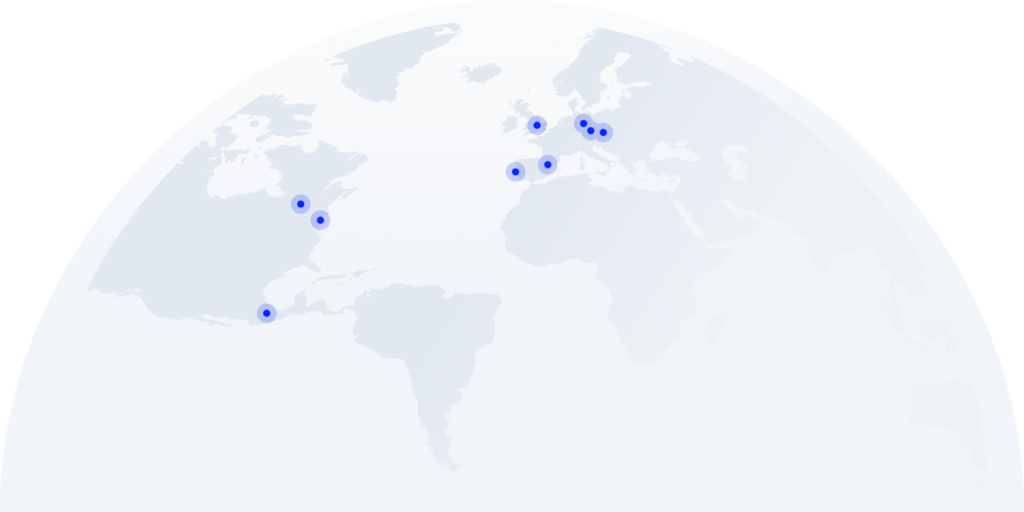Click-to-Call for Business: Know What Happens After the Click

Mobile search drives action fast. But for many businesses, the moment someone taps “Call” is where visibility ends. And when 42% of mobile searchers use click-to-call during the buying process¹, that gap costs you. Lost attribution. Wasted ad spend. Zero insight into what’s actually working.
That’s why performance-driven teams are turning to click-to-call tracking—not just to count calls, but to qualify them, trace their origin, and connect them back to revenue.
This isn’t about call volume. It’s about control. When you can see which campaigns drive real conversations, and which ones waste your sales team’s time, you stop guessing and start scaling.
Key Takeaways:
- Click-to-call tracking connects ad spend to actual conversations, helping marketers prove ROI and optimize campaigns with real call data.
- Without tracking, you’re blind to lead quality—sales teams waste time on unqualified calls, and marketing can’t attribute what’s working.
- Mobile search is where most calls start, but the gap between tap and conversion often goes unmeasured—tracking fills that hole.
- Platforms like CloudTalk add deep analytics, dynamic numbers, and CRM sync, making every call traceable, taggable, and actionable.
- Industries like SaaS, healthcare, and legal benefit most, where every inbound call could mean a sale, a client, or a missed opportunity.
Still spending on calls without knowing what’s working? Start tracking what matters.
What Is Click-to-Call Tracking?
Click-to-call tracking is the process of monitoring and analyzing phone calls that are initiated through a click-to-call action—usually from a mobile device or webpage.
This often involves assigning dynamic phone numbers or using tracking software to identify the source of the call, such as a specific ad, keyword, or landing page. The goal is to understand what’s driving phone interactions and how they contribute to business outcomes.
Click-to-call tracking is especially valuable in marketing, where teams need to measure the performance of paid campaigns, search ads, or on-page CTAs. It bridges the gap between digital engagement and offline conversation.
Unlike basic click-to-call, which simply connects a call, tracking adds a layer of analytics—making it easier to attribute leads, assess call quality, and improve campaign targeting.
Call Extensions vs. Click-to-Call Ads
While they often appear together, call extensions and click-to-call ads are not the same.
- Call extensions are an add-on that lets you display a phone number within your search ad.
- Click-to-call ads are designed specifically to drive phone calls as the primary conversion—especially on mobile.
Here’s how they compare:
Feature
Call Extensions
Click-to-Call Ads
Purpose
Add a phone number to existing ads
Drive calls directly from the ad itself
Display
Adds a clickable number beneath ad copy
The entire ad acts as a call trigger
Device Focus
Works on desktop and mobile
Mobile-first; optimized for tap-to-call
Conversion Action
Optional (user may still click site)
Call is the main conversion action
Best Use Case
Support + multi-goal campaigns
Sales, lead gen, or call-focused intent
Used together, they help businesses cover both web traffic and call-driven leads, ensuring no opportunity is missed—especially on mobile.
See where every call comes from—down to the ad, keyword, or page.
How Click-to-Call Tracking Works
Someone clicks a phone number on your landing page. The call goes through. Sounds simple enough—but without tracking, that’s where the trail ends.
With click-to-call tracking, each call is tied to a specific source: a keyword, ad group, page, or campaign. When the user taps to call, the system logs the click, routes the call through a trackable number, and sends everything—call time, duration, outcome—into your dashboard.
You’re not just seeing that a call happened. You’re seeing where it came from, who handled it, and what happened next.
Unlike basic click-to-call, which offers zero attribution, this approach turns every call into actionable data. And when paired with tools like CloudTalk’s click-to-call, that data flows straight into your CRM, so you can stop guessing and start optimizing.
It’s built for marketers, but it pays off across the entire funnel.
The Business Benefits of Click-to-Call: Why It Matters
Click-to-call makes it easy for customers to reach you. But without tracking, it’s easy for performance to slip through the cracks.
Are your ads actually working?
Are your leads qualified?
Are your campaigns driving real conversations—or just clicks?
Click-to-call tracking answers those questions. It doesn’t just log that a call happened—it shows where it came from, who made it, and what happened next. And for teams that rely on inbound calls to close deals, that context is everything.
Here’s why it matters:
Track ROI with Real Attribution
Click-to-call ads can drive high-intent traffic—but without tracking, you’re flying blind. You can’t tell which campaign brought in that call, or whether it led to a sale.
With tracking in place, marketers can finally tie revenue back to ad spend, see which keywords are pulling their weight, and stop wasting budget on underperforming channels.
Improve Lead Quality and Sales Insights
If your team’s saying “these leads are junk,” tracking helps prove it—or fix it.
Click-to-call tracking gives you visibility into lead source, call duration, and outcomes, helping sales leaders identify patterns and optimize targeting. You’ll know which calls are worth replicating—and which ones to filter out before they hit your reps.
Capture the Full Mobile Search Journey
Over 60% of Google searches happen on mobile, and many of those lead to a tap-to-call action. But that jump—from search to phone call—is where data often gets lost.
Click-to-call tracking fills in the blanks. You’ll see which search terms, ads, or pages lead to calls—and how those calls convert. It’s especially useful for businesses running local, mobile-first, or location-based campaigns.
Enhance the Customer Experience
Tracking isn’t just for marketers. With the right data, you can route calls more intelligently, prioritize high-value leads, and follow up with context.
Industries like SaaS sales, healthcare, legal, and home services rely on calls to close deals fast. Click-to-call tracking gives those teams the data they need to connect faster—and smarter.
Don’t just guess which leads are qualified. Prove it.
How Cloudtalk’s Call Tracking Software Enhances Call Campaigns/Ads
Google Ads can show when a call happens—but not much else. It won’t tell you which calls converted, which campaigns brought in the right leads, or how your team handled them.
CloudTalk fills in the gaps. It adds real-time context, lead insights, and performance analytics that go far beyond what ad platforms offer.
Here’s what it brings to your click-to-call strategy:
- Deeper Conversion Attribution
Track the full path from ad click to call outcome—see what converts, and what doesn’t. - Call Analytics in Real Time
Get insights on duration, missed calls, answer rates, and caller behavior from a single CloudTalk dashboard. - CRM + Helpdesk Integration
Automatically sync call data with your sales or support tools for better follow-ups and reporting. - Dynamic Number Insertion
Assign unique numbers to different ads or pages to pinpoint what’s driving results. - Smart Routing and Call Tagging
Route calls to the right agents based on intent, and tag them for faster post-call actions.
Google Ads tells you when a call happened. CloudTalk tells you why.
Best Practices for Click-to-Call Optimization
- Use Clear, Action-Oriented CTAs
Phrases like “Call Now” or “Speak with a Specialist” outperform vague prompts. Make the value of the call obvious—and urgent. - Align Call Routing with Campaign Intent
Send leads from specific ads to the right sales or support team. Use tools like CloudTalk’s smart routing to avoid dropped or misdirected calls. - Optimize for Mobile Speed
Ensure your call buttons are prominently placed, easy to tap, and load fast on mobile. A delayed button is a lost lead. - Track Calls Like You Track Clicks
Use dynamic numbers and analytics tools to connect each call to a campaign. Without tracking, there’s no way to improve. - Test and Refine Regularly
Monitor call performance by time of day, ad copy, and placement. Small tweaks—like moving a CTA higher on the page—can lead to major gains.
Common Mistakes That Undermine Click-to-Call Performance
- Not Enabling Call Tracking
Click-to-call without tracking is a black hole. You’re spending budget with no idea what’s working. Use a platform like CloudTalk to close the loop. - Using Weak or Generic CTAs
If your CTA says “Contact Us,” you’re blending in. Use specific, conversion-focused language that pushes action. - Ignoring Call Quality and Caller Experience
A fast connection means nothing if the call feels disjointed. Monitor call handling times, background noise, and agent tone. - Reusing the Same Script for Every Call
One-size-fits-all scripts often miss the mark. Tailor your opening based on ad intent—what worked for support won’t work for sales. - Skipping Follow-Up Integration
If calls aren’t tied to your CRM or helpdesk, leads fall through the cracks. Integrate call data directly into your post-call workflows for full visibility.
How to Set Up Click-to-Call Tracking
Getting started with click-to-call tracking is easier than it looks—especially with tools like CloudTalk that handle the backend for you. Here’s how to set it up in just a few steps:
Step 1: Choose a Call Tracking Platform with Dynamic Numbers
Start by selecting a provider that supports dynamic number insertion, VoIP routing, and real-time analytics. Platforms like CloudTalk offer out-of-the-box integrations with your CRM, ad platforms, and customer service tools—making setup faster and cleaner.
Step 2: Assign Unique Numbers to Each Campaign
Create or assign different phone numbers for each traffic source—like paid ads, landing pages, or Google listings. These numbers will tell you exactly where each call came from.
Use CloudTalk’s dashboard to manage local, toll-free, or international numbers in one place.
Step 3: Enable Click-to-Call Buttons on Your Site or Ads
Make sure your phone numbers are clickable across mobile pages, landing pages, and Google Ads call assets. Use tel: links or CloudTalk’s click-to-call widget to launch calls with one tap.
Step 4: Connect Your Tracking to CRM and Analytics
Sync call data with tools like Salesforce, HubSpot, or Google Analytics. This gives your team visibility into lead quality, follow-ups, and outcomes—right inside your existing workflows.
Step 5: Test and Monitor Performance
Call each tracking number yourself to ensure routing and logging are working. Check reporting dashboards to confirm calls are tied to the correct sources. If you’re running high-volume or time-sensitive campaigns, set alerts for missed or abandoned calls.
Make Every Call Count
You can keep guessing which campaigns drive real conversations, or you can start tracking what matters.
Click-to-call tracking doesn’t just help you see the calls. It helps you understand them. Which ads worked. Which leads converted. Which conversations actually moved the needle.
With the right tools, you’re not just collecting data—you’re connecting calls to outcomes. And that makes every conversation more valuable.Want to dig deeper into voice-based performance insights? Learn how call tracking analytics can help you improve attribution, sales efficiency, and campaign ROI.
Want to see what full-funnel call tracking looks like in your workflow?
We’ll walk you through it.
Source:
FAQs
How to track phone number clicks?
Use click-to-call tracking to log clicks by source, device, and page—then tie them to real-time call outcomes.
What is call tracking?
Call tracking links inbound calls to marketing sources, helping teams track phone calls from website and campaigns.
What is a click-to-call service?
A click-to-call service lets users tap a number to call instantly—great for mobile call tracking and fast conversions.
Can Google Analytics track phone calls?
With tools like CloudTalk, you can start tracking click-to-call in Google Analytics for deeper insights.





















